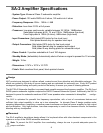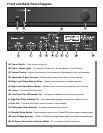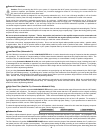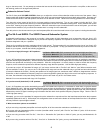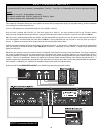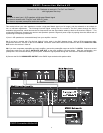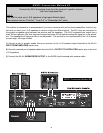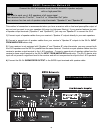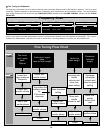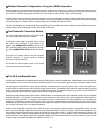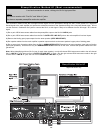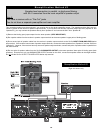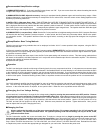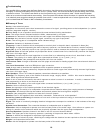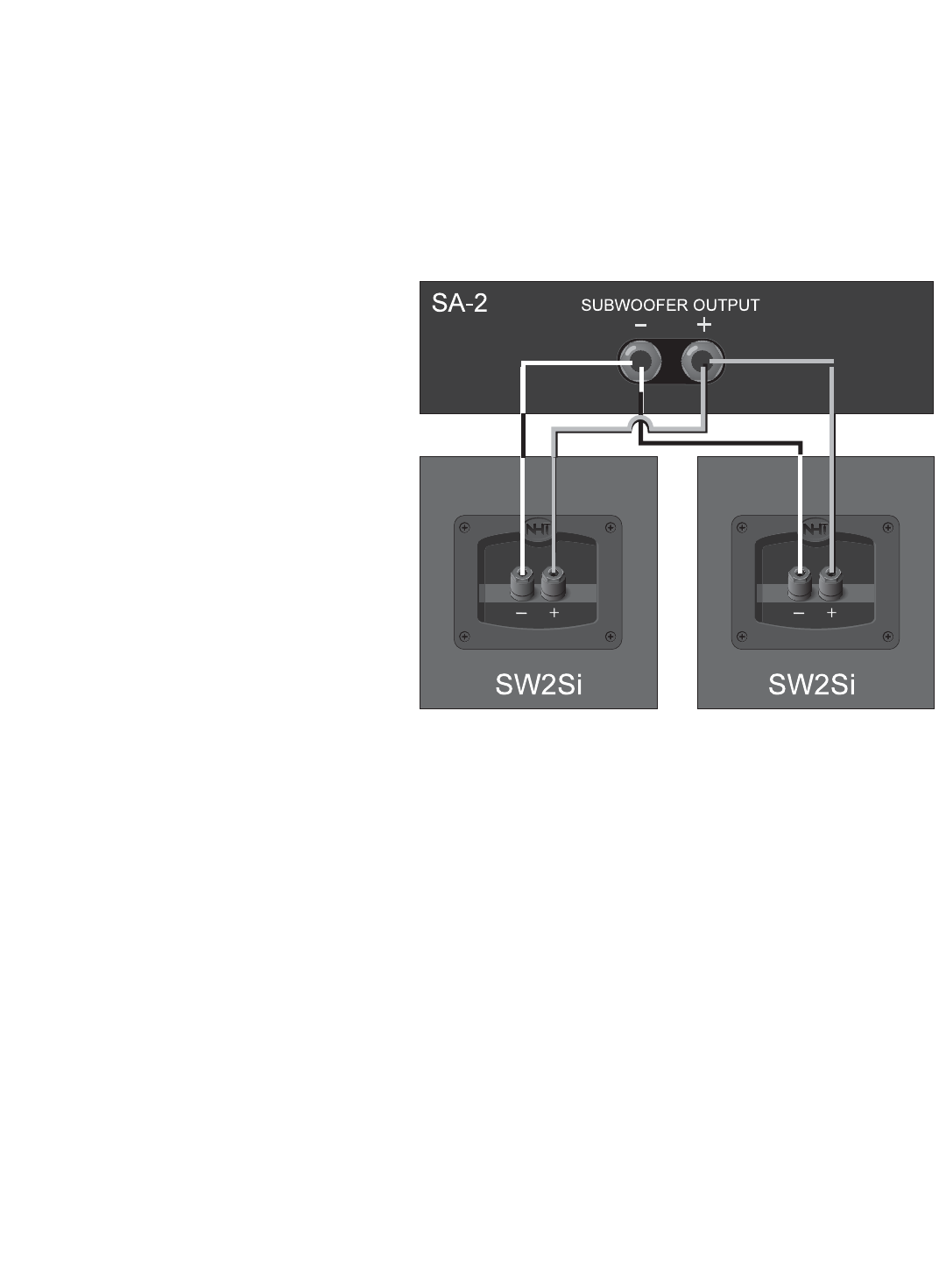
Multiple Subwoofer Configurations: Using two SW2Si subwoofers
While the addition of a powered subwoofer system results in significant improvements to an audio or home theater system, there are
some potential drawbacks to the use of a single subwoofer in certain rooms. A single subwoofer tends to excite the resonant frequen-
cies of a room, inevitably causing peaks and dips in the room response within a certain range of low frequencies.
To help counteract some inherent low frequency colorations, it can be advantageous to employ multiple subwoofers placed assymetri-
cally in the room. When two subwoofers are used together and are set up properly with respect to phase and level, they tend to smooth
out peaks and dips, for a flatter overall low frequency response, increased articulation and clarity.
The SA-2 was designed with sufficient high current capability to drive two SW2Si subwoofers. Adding a second SW2Si decreases the
impedance load, which increases the SA-2’s power output to 165 watts.
Dual Subwoofer Connection Method
To run two SW2Si subwoofers from a single SA-2 ampli-
fier, the two subwoofers are wired in parallel.
1) Using two similar lengths of speaker cable, connect
the positive (red) conductors of both cables to the
positive (red) SUBWOOFER OUTPUT terminal on the
SA-2, and both negative (black) conductors to the nega-
tive (black) SUBWOOFER OUTPUT terminal on the SA-
2.
2) Connect one speaker cable to the first subwoofer
(positive conductor to positive terminal, negative
conductor to negative terminal).
3) Connect the second speaker cable to the second
subwoofer, wired in the same fashion.
The SA-2 and Biamplification
All NHT tower loudspeakers are designed with dual sets of binding posts to allow for biamplification. Biamplification is the use of two sep-
arate amplifiers, one to power the low frequency (subwoofer) drivers and one to power the upper frequency (midrange / tweeter) drivers.
The advantages of biamplification include reduced distortion, increased dynamic range and power output. Since both amplifiers are
spared the task of reproducing the entire frequency range, both are able to concentrate all their headroom toward a specific frequency
range. In the event that the speakers are driven to elevated listening levels, the subwoofer amplifier may clip first, but this distortion will
be isolated from the upper frequency ranges because they are amplified separately.
Biamplifying tower speakers with the SA-2 results in added benefits, as it transforms their built-in subwoofer sections into fully adjustable
powered subwoofers. Using the SA-2’s onboard bass tuning functions, the user can fine-tune a tower loudspeaker’s bass response in
a specific listening environment. For example, if the speakers are used in a room that tends to under-emphasize or over-emphasize low
frequencies, it is possible to increase or decrease the volume level of the subwoofer sections independently of the upper driver sections.
Additionally, the SA-2’s low-pass crossover allows the user to adjust the rolloff of low frequencies to the subwoofer sections of the speak-
ers, for further fine-tuning of low- to mid-bass frequencies.
Towers may be biamplified monaurally using a single SA-2 and a full-range main (stereo) amplifier, or biamplified in stereo using two
SA-2’s and a main amplifier. Additionally, the towers may be biamplified either in series or in parallel. Wired in series (Method #1), the
main amplifier receives a filtered line-level signal via the high-pass output from the SA-2. Wired in parallel (Method #2), both the main
amplifier and the SA-2 receive full-range signals directly from the preamplifier. The main amplifier may be a stand-alone stereo unit,
dual monoblocks, or the amplifier section of an integrated amplifier or A/V receiver that features “Pre-Out” and “Main-In” jacks. The SA-
2 may be used to successfully biamplify NHT Models 2.5i and VT-1.2.
11



